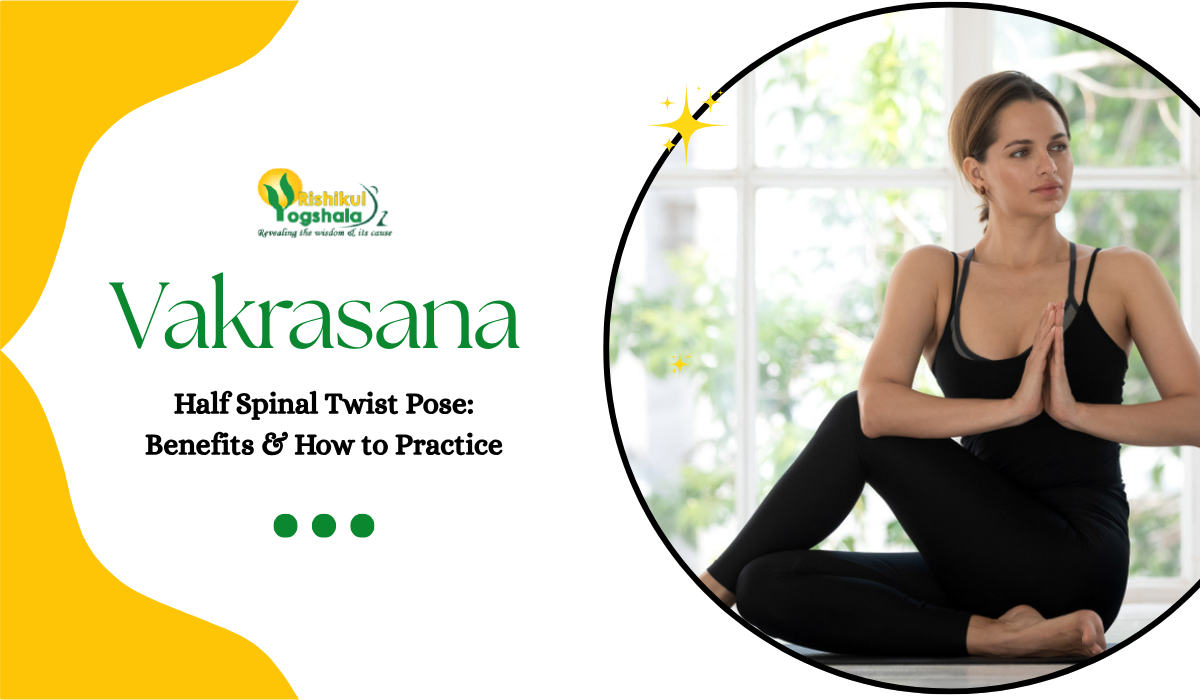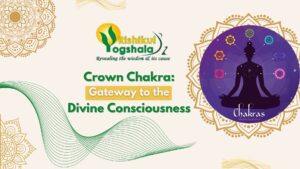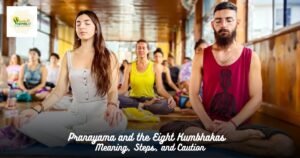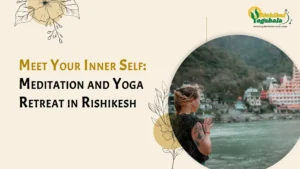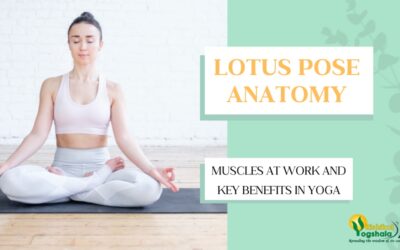Vakrasana, also called Half Spinal Twist Pose, is one of the key seated postures within classical Hatha Yoga. The word “Vakrasana” is derived from the words “Vakra”, meaning twisted or curved in Sanskrit and “Asana,” which is posture. Even though it is a simple asana, it is an extremely valuable yoga pose in which you twist the spine gently while the rest of the body stays grounded and aligned.
Vakrasana is considered a beginner’s asana; however, it is an important contribution to spinal health and is useful in therapeutic style yoga practices. There are many assisted twists or advanced twisting asanas, such as Ardha Matsyendrasana, that are designed for more advanced students. Unlike advanced twists, this is an appropriate twist for beginners, older adults, and individuals with some limitations in flexibility.
The twist of Vakrasana massages the abdominal organs, improves digestion, and promotes blood circulation to the spinal cord and surrounding muscles. Vakrasana produces physical benefits, as well as mental calmness and emotional balance.
Yoga therapists will often recommend other twists too, but for individuals who may be classified with diabetes, mild back pain, digestive disorders, or sedentary lifestyles, they will often recommend Vakrasana. Additionally, with regular practice, Vakrasana significantly increases spinal mobility, builds core strength, and promotes healthy functioning of the nervous system. Vakrasana can be practised easily from home, in yoga practice, group classes, or at work as part of stretching.
How to Practice Vakrasana (Half Spinal Twist Pose)
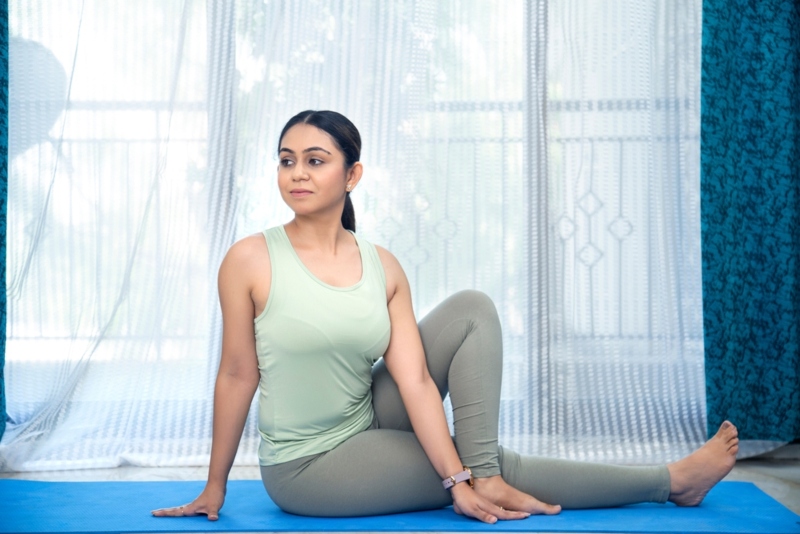
The first step for the practice of Vakrasana is to find a clean and peaceful spot to do the practice. Place a yoga mat on the ground to do the pose and sit on it with your legs extended in front of you and in a relaxed seated position. You should put on comfortable clothing that is loose-fitting and does not restrict any movement in your spine and limbs. The best times to practice are in the morning on an empty belly or at least 3-4 hours after your most recent meal.
1. Starting Position – Dandasana (Staff Pose)
Begin seated with your legs extended straight in front of you in the usual Dandasana or Staff Pose. Sit upright with your spine elongated, shoulders relaxed, and arms resting naturally at your sides, keeping the elbows straight and hands placed gently beside your hips. Your feet should be together and pointing your toes toward your face. The purpose of this position is to allow for the twist action and also to align your posture.
2. Entering the Twist (Right Side)
Now, bend your right leg at the knee and bring your foot down onto the floor, either beside your left knee or just outside your left thigh, depending on your flexibility. The sole of your right foot should be fully grounded, and the heel should be nice and close to your left knee, but not pressing into it. Your left leg should remain stretched out straight along the floor. Take a deep inhale and gently elongate your spine, lifting through the crown of your head as you sit tall.
As you exhale, begin twisting your torso to the right. Start the twist from your spine, and as you inhale, let the twist rise through your mid and upper back, your shoulders and neck. Finally, place your right palm on the floor just behind your right hip to support your right arm and stabilise your spine with movement in your torso to twist.
As you are doing this, wrap your left arm around the outside of the right knee, and you will want to find one of two locations for your left hand; it really depends on your flexibility. Beginners may want their left hand on the right knee, enabling a moderate rotation without too much stress. If you are more flexible, you can wrap your left arm around your right knee with your left hand aiming for your right foot or shin – a deeper twist, working your spinal and core muscles more.
Also Read: Veerasana (Hero Pose): Benefits, Technique, and Tips
3. Final Position and Breath Awareness
After you’ve moved into the final posture, check to make sure that both sitting bones are equally grounded on the mat. Your spine should also be long, without slouching or leaning. You should be gently turning your head to turn your gaze over your right shoulder, or holding a neutral neck position if it is uncomfortable to do a full neck twist.
Hold the posture for 20 – 30 seconds, and breathe, noticing your deep, even breaths. With each exhalation, focus on letting your body relax, and each time you exhale, try to deepen your twist even just slightly further. Allow every part of your body to let the full aspect of the twist occur, and I do not force the twist; let your breath guide you into a deeper but safe position of the twist.
4. Releasing and Repeating on the Other Side
To come out of the posture, gently release the twist on the exhalation. Come back to the centre and straighten the right leg back to Dandasana. Rest for a few moments and notice the effects of the twist on the spine and abdomen.
Now repeat all the same steps on the other side. Bend the left knee, put the left foot beside the right knee, twist the torso to the left, put the left hand behind you, and wrap the right arm around the left knee. Make sure to be symmetrical in practising the pose, holding the twisting pose for equal amounts of time on both sides.
By practising both sides, you ensure equal flexibility of the spine and equal stimulus of both sides of the digestive organs.
Vakrasana or Half Spinal Twist Pose Benefits
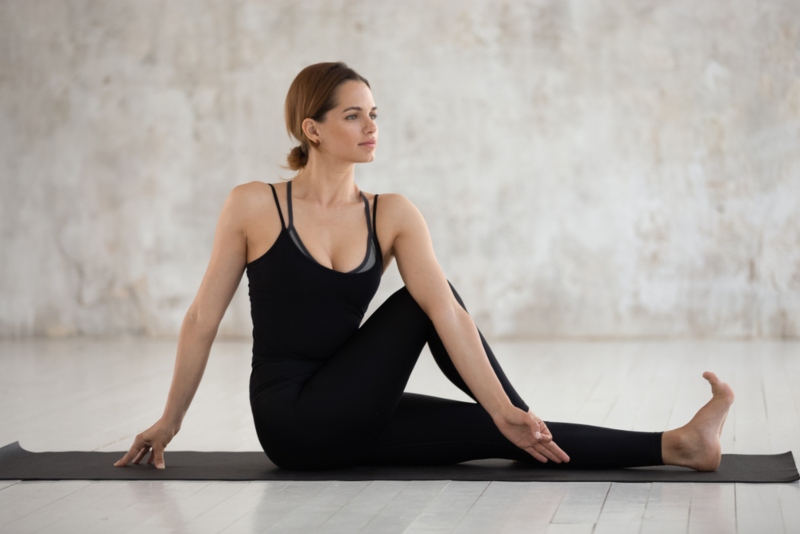
Vakrasana is not only good for your body, but it is also beneficial for the mind and emotional self. Here are some key benefits to help you decide to include Vakrasana in your daily yoga practice:
1. Enhances Spinal Flexibility and Mobility
Vakrasana involves a controlled twist of the spine to tone and stretch the spine. This promotes elasticity in the muscles and ligaments of the spine, increases flexibility overall, and reduces stiffness.
2. Stimulates Digestive Organs
The twist both massages and stimulates the abdominal organs, primarily the liver, pancreas, stomach, and intestines. This stimulation of the digestive organs helps digestion, alleviates constipation, and promotes the body’s natural detoxification process.
3. Improves Posture and Reduces Back Pain
By strengthening the spinal muscles and realigning the vertebrae, Vakrasana serves as a remedial corrective to bad posture, especially for those with sedentary lifestyles or long hours behind a desk, while stretching and relieving mild low back pain.
4. Calms the Mind and Enhances Concentration
As is true with many yoga asanas, Vakrasana promotes deep breathing and mindfulness. This causes the mental stress to decrease and enhances concentration, calming the mind and improving balance within the body.
Also Read: Prasarita Padottanasana: Benefits, Modifications and Variations
5. Good For Diabetics
With its improving functions to the pancreas and digestive system, a consistent practice of Vakrasana can help to regulate blood sugar levels, thus becoming a useful style of yoga within a systematic program for diabetes management.
6. Tone the Abdominal and Oblique Muscles
As highlighted, not only does Vakrasana support the roundness, but it also tones and develops the muscles of the abdomen and sides, which can lead to core stability and improved body composition.
7. Increases Circulation
In addition to increasing the overall oxygenation and rejuvenation of cells and issues of the body, the twisting motion during an asana promotes an increase in blood circulation and distribution to various parts of the body, thus enhancing overall circulation for nutrient delivery.
Vakrasana or Half Spinal Twist Pose Precautions
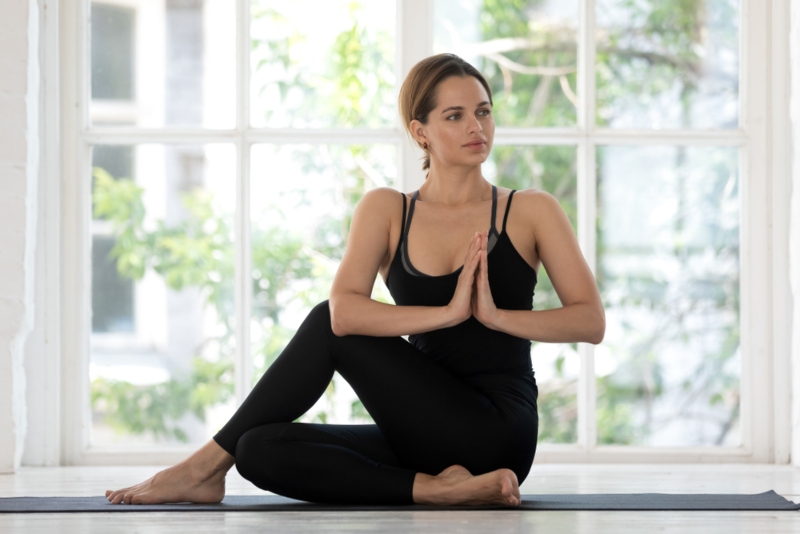
While Vakrasana is a gentle twisting asana, you should be aware to exercise care when practising. In particular, pregnant women should avoid this stance. Twisting in the abdominal region could be detrimental to a developing fetus. Generally, individuals with hernia, ulcer, or recent abdominal surgery should not practice this posture, or any other postures within a practice, without speaking with a health care professional.
If you have chronic back pain, issues with spinal discs, or have had spinal surgery, you should also avoid Vakrasana or only practice the posture under the direction of a qualified yoga therapist. There is a chance that twisting could exacerbate your underlying condition if you do not practice with care.
When practising Vakrasana, avoid over-twisting the spine, and avoid forcing the body into the posture. The twist should be gentle and controlled, and the movement should be guided by the breath. Any sharp or uncomfortable pain felt while practising should be a signal to ease out of the posture completely.
Individuals with high blood pressure or glaucoma should also be aware of head and neck positioning, and possibly not twist in this pose.
Conclusion
Vakrasana or Half Spinal Twist Pose is a versatile restorative yoga pose providing multiple benefits for the spine, digestive organs and mental clarity. Its simple steps and gentle rotation make it a wonderful pose to add to your practice, especially if you are just starting to practice yoga or working on improving your spine health.
If you are hoping to stay limber, relieve back pain, or assist digestion, Vakrasana is a safe and effective way to restore energy to the body while calming the mind. Always remember, consistency is important when practising any yoga asanas and combine Vakrasana with your other asanas for variety and with purposeful, mindful breathing for a well-rounded approach to mental and physical health!

Frequently Asked Questions (FAQs)
1. Is Vakrasana suitable for beginners?
Yes, Vakrasana is one of the best yoga poses for beginners. It offers a gentle introduction to spinal twists and does not require any kind of expert flexibility or strength. Because of its simplicity, it is good for creating awareness of the spine and breath.
2. How long should I hold the pose?
First, begin by maintaining the Vakrasana position for 20-30 seconds on each side. As you gain flexibility and you are comfortable in your yoga practice, you can increase the length of time towards 45 seconds or 1 minute for each side. During the hold, it is important to continue calm and steady breathing.
3. Can I do Vakrasana every day?
Absolutely! You can safely add Vakrasana to your regular yoga routines every day. It’s an excellent pose for safe digestion, reducing stiffness in the lower back and keeping your spine limber, especially in the morning, or as part of a warm-up series.
4. What’s the difference between Vakrasana and Ardha Matsyendrasana?
Both Ardha Matsyendrasana and Vakrasana are spinal twisting poses; however, Ardha Matsyendrasana is a more advanced twist that has both legs bent, with one leg crossing over the other leg. Vakrasana is a considerably simpler version of the twist, as the only bent leg is a single leg, allowing for the possibility of an individual who is inflexible or has limitations with their spine to practice it.

